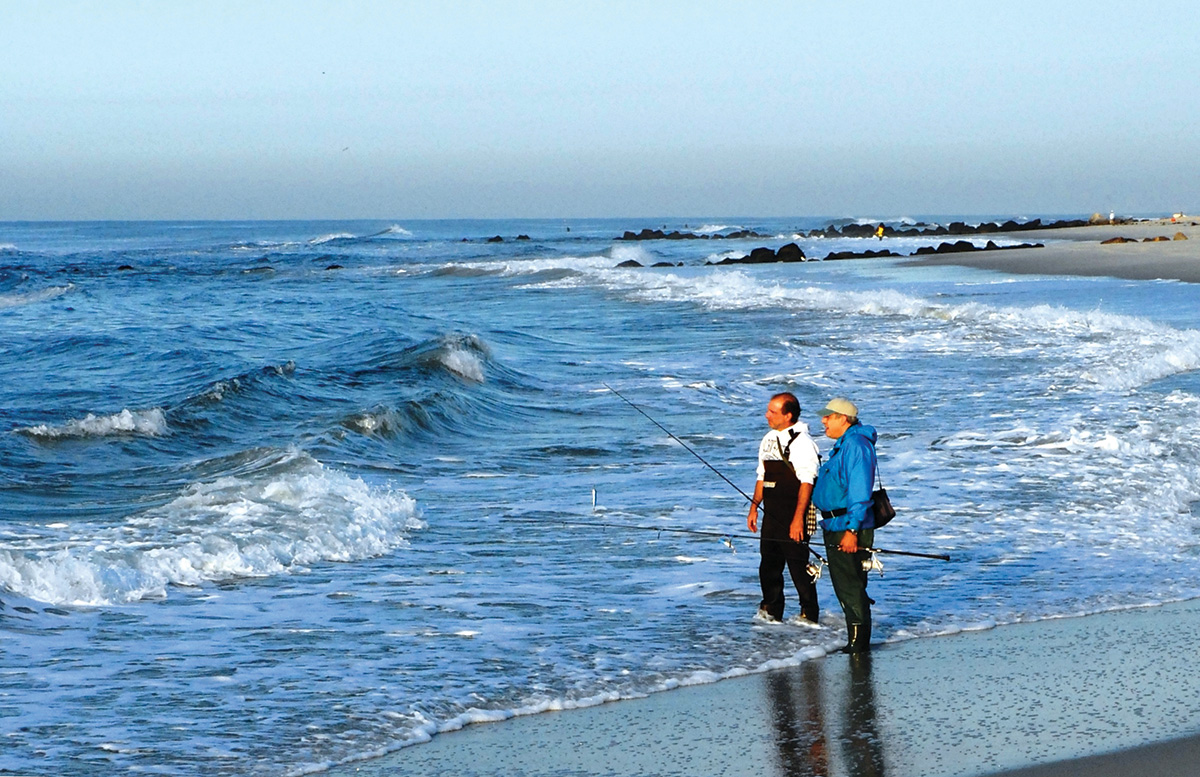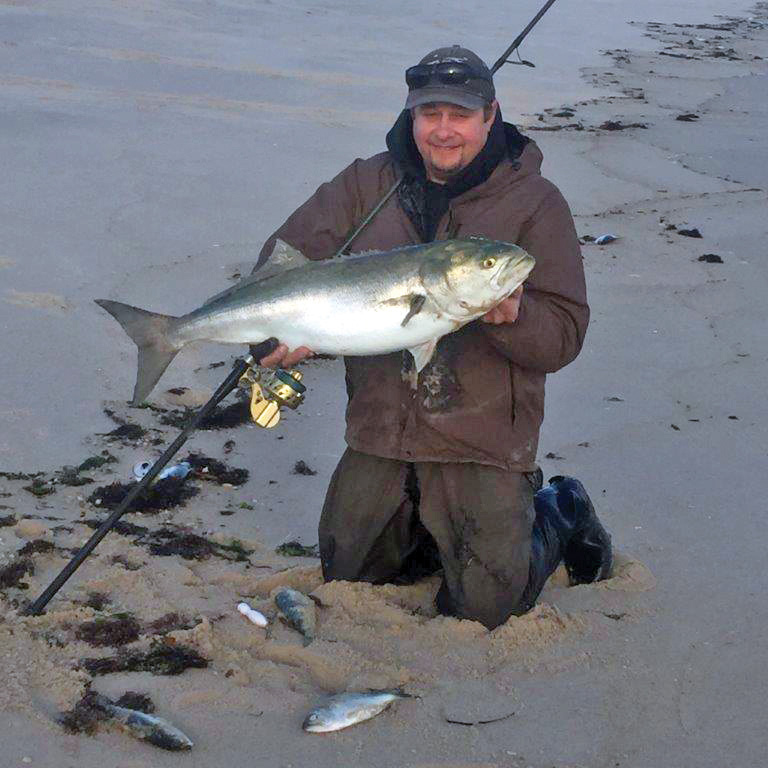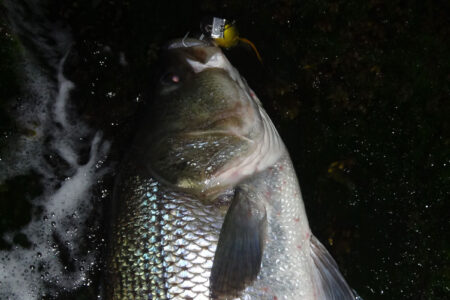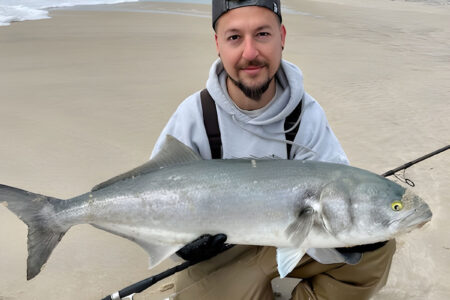
When working artificials, it’s critical for success to place your offering into the strike zone. Anglers who figure out how to regularly deliver their lures into the feeding strike zone consistently catch more and bigger fish than those who have no idea what’s going on. And, anglers who figure out how to present their offerings to fish in a manner that elicits a strike, are even more prone to consistently catch more and bigger fish.
You know the types; they show up when anglers on the beach or jetty may be catching a fish here or there, and these sharpies catch fish – and bigger fish – on what appears to be just about every cast. If you haven’t come across them yet, you’ll hear of them through stories at the tackle shops, in the beach parking lots or anywhere fishermen gather.
How are they managing this? What are the pieces of the formula that they have figured out that bring them success? In speaking about this with Crazy Alberto Knie, he shared some of his experiences and insights on the subject, both as a fisherman and a lure manufacturer. If you have attended any of his seminars, you know his diligence in the study of fish, structure, baits and lures to ensure success.
There are multiple factors that play into each aspect of finding and catching fish. Putting your offering on the fish’s dinner plate involves awareness and understanding of structure, current, tides, bait and how to work lures based on conditions.
Before taking your first cast, Crazy Alberto recommends observing the water and what is going on. Observe and understand what bait the fish are feeding on, how the current is moving and where the fish are likely to be hanging out.
There are many different forms of structure that will attract and hold fish. Look for bars, rips, cuts, bowls, drop offs, rock piles, points and other areas where the fish can ambush bait. If there doesn’t appear to be any visible structure, look for lobster pots, anywhere the flow of the water may be disturbed, and of course, along the edge of the surf line. Focus on the structure, rather than casting randomly along the open beach, as this will increase your odds for catching.
The same holds true when fishing from the rocks or even a boat for that matter. Find the structure, pay attention to any seams in the current, direction of the current, rock piles, drop offs, points, waves, jetties, docks – any location where bait is likely to become disoriented and ambushed. As you are figuring out your approach to fish structure, also pay attention to the direction of the current, any creases in the current, how it flows along the shoreline, the presence of bait and any white water. These are the areas where fish will most likely be focused on for their next meal.
Once you are in the ballpark, Crazy Alberto emphasizes the importance of learning how to manipulate lures to present them as a crippled baitfish. The more time spent working with lures, the more familiar one can become with their actions, and knowing what the lure is doing at any given time during the retrieve. The more familiar an angler becomes with their lures, the greater success they will experience. It comes down to practice, practice and more practice.
Once you gain an understanding and knowledge of how the lures work, casting and working them properly through the strike zone is important. An example is when fishing from the beach, there may be a bar offshore equal to the distance of two-thirds of your cast. Crazy Alberto recommends to cast beyond the bar, work the lure to the bar at a steady pace and then slow down, pause, jerk and give the lure extra action, while keeping the lure in the strike zone at the base of the bar to imitate a wounded baitfish.
When throwing a darter, Crazy Alberto casts the plug beyond the bar, reels it steadily into the strike zone, which can include the stretch along the outside base of the bar, the side of the bar, on top of the bar and just inside the bar. If the water is shallow enough to create white water, all the better. Once the darter reaches the strike zone, he slows the speed of his retrieve to a crawl, jerks the lure and then pauses. He continues the jerk-pause method through the strike zone, imitating a wounded baitfish.
This attracts the fish and elicits strikes. Once the lure moves beyond the structure, he finishes the cast with a relatively steady retrieve.
When fishing a beach or shoreline with a good offshore current, Crazy Alberto modifies his approach by casting a top-water lure such as a pencil popper or spook type plug, which can be worked in a “walk-the-dog” fashion. He casts out the lure, lets it swing in the current while imparting some action to the lure during the swing, and then pauses. At that point, the fish will grab it. This process works off beaches with a good current, in rivers, canals and inlets.

When using a top-water plug along the surf line, work the lure right in front of the crest of the waves before they break on the beach. Casting parallel to shore keeps your lure in a prime feeding zone for almost the entire length of your retrieve, and the fish that are feeding along the surf line have to react more quickly to avoid getting caught in the waves. The closer the fish get to the shore, the faster they move because they are nervous in the shallower areas.
Working the same area with a bucktail jig, Crazy Alberto drags the bucktail along the bottom, creating puffs of sand that imitate sand eels and sand fleas burrowing into the bottom. The cast can be straight out, pulled through the surf, or along the surf line with the jig puffing sand along the edge of the surf before it is pulled through. This principle works well for metals too. When working them into the beach, if nothing is hitting your lure, try to work it slowly along the bottom, causing the sand to puff up as it moves.
Should you find yourself working a beach from the outside and casting to shore from a boat, be it the rocks or the backside of a breaking surf, follow the same principle as discussed above. Try to cover as much shoreline, as close to the shore/rocks as you can with each cast. Often the fish hold right up against the rocks or surf line to grab bait caught in the white water.
When throwing pencil poppers into the rocks from a boat, the strike zone often is within just two or three turns of the reel handle because the fish are focused on catching disoriented bait around the structure. At times I have found fish to hit only during the first pop or two from where the lure landed in the white water, and then ignored it once outside of the white water. Get your lure in tight to the structure under these circumstances.
These insights should help you get started to understand how to zero in on the fish’s dinner plate – aka strike zone – as well as how to work your lures through the strike zone to elicit more strikes. These principles apply along the entire coast from Maine down through Florida, for a broad range of fish from striped bass and bluefish to snook, redfish and tarpon.



